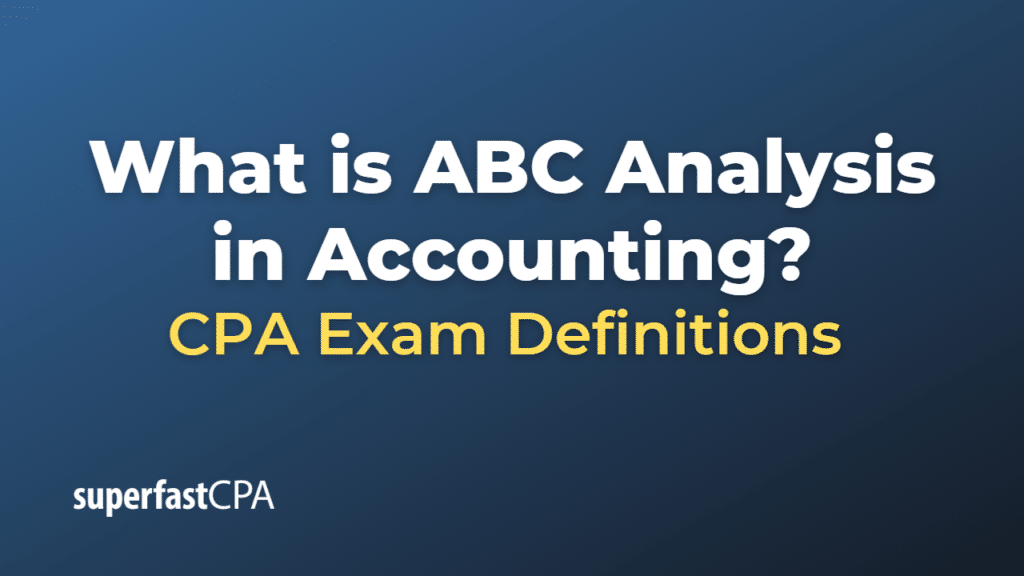ABC Analysis in Accounting
ABC analysis in accounting is a method used to categorize and prioritize items, particularly inventory, based on their importance and value to a business. It is derived from the Pareto principle, which states that 80% of the effects come from 20% of the causes. The primary goal of ABC analysis is to help businesses efficiently allocate their resources and focus their management efforts.
In the context of inventory management, ABC analysis classifies inventory items into three categories: A, B, and C.
- A-items: These are the high-value and high-priority items that typically represent a small percentage of the total inventory items but account for a large portion of the total inventory value. A-items require the most attention, strict control, and frequent reviews.
- B-items: These are the moderate-value and medium-priority items that usually represent a larger percentage of the total inventory items but account for a smaller portion of the total inventory value compared to A-items. B-items need less strict control but should still be monitored regularly.
- C-items: These are the low-value and low-priority items that generally represent the largest percentage of total inventory items but the smallest portion of the total inventory value. C-items require the least control and can be managed with a more relaxed approach.
Although ABC analysis is most commonly associated with inventory management, the concept can also be applied to other areas in accounting and management, such as cost allocation, customer segmentation, and receivables management.
By using ABC analysis in accounting, businesses can prioritize their efforts and resources to focus on high-impact items or activities, ultimately improving efficiency, reducing costs, and enhancing overall operational effectiveness.
Example of ABC Analysis
Let’s consider a fictional company, Elite Office Supplies, which sells various office supplies and equipment. The company wants to optimize its inventory management by prioritizing its products using ABC analysis.
- Elite Office Supplies starts by analyzing its inventory and determining the total value and quantity of each product.
- The company then categorizes its inventory items into A, B, and C groups based on their value and importance to the business.
A-items:
- High-end office chairs: 5% of total items, 55% of total inventory value
- Premium printer cartridges: 10% of total items, 30% of total inventory value
B-items:
- Mid-range office chairs: 20% of total items, 10% of total inventory value
- Standard printer cartridges: 25% of total items, 4% of total inventory value
C-items:
- Basic office chairs: 30% of total items, 1% of total inventory value
- Economy printer cartridges: 10% of total items, 0.1% of total inventory value
- Elite Office Supplies adjusts its inventory management practices based on the ABC classification:
- A-items: Strict inventory control, frequent reordering, and close monitoring to avoid stockouts
- B-items: Regular inventory control and monitoring, moderate reordering frequency
- C-items: Relaxed inventory control, less frequent reordering, and minimal monitoring
By implementing the ABC analysis, Elite Office Supplies can allocate its resources and focus its management efforts on high-value items (A-items) while reducing the time and effort spent on low-value items (C-items). This approach can help the company optimize its inventory management, minimize holding costs, and improve overall operational efficiency.













